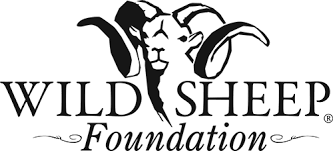Be Heard on Expanding Hunting and Fishing Opportunities on Wildlife Refuges

Today, the U.S. Fish and Wildlife Service (FWS) issued the latest Hunt-Fish Rule in a decades-long process of expanding hunting and fishing opportunities on wildlife refuges and a few fish hatchery lands. The 2024 Hunt–Fish Rule proposes 53 new distinct hunting and sport fishing opportunities on approximately 211,000 acres nationwide in the National Wildlife Refuge System.
The final rule will be published in the Federal Register soon and be available at http://www.regulations.gov, Docket Number: FWS-HQ-NWRS-2024-0034
“National Wildlife Refuges are central to the successful U.S. strategy of restoring and maintaining wildlife,” said Gray N. Thornton, President and CEO of the Wild Sheep Foundation. “What makes the strategy successful is the opportunity to harvest wildlife under scientifically determined limits and practices. By promoting this connection between people and wildlife, hunting sustains public support for conservation and pays for the necessary work of maintaining and improving habitat.”
Hunting, fishing, and other outdoor activities contributed more than $394 billion in economic expenditures in communities across the United States in 2022, with hunters and anglers accounting for over $144 billion in expenditures, according to the Service’s National Survey of Fishing, Hunting and Wildlife-Associated Recreation. The survey also found that, in 2021, an estimated 39.9 million Americans over the age of 16 fished and 14.4 million hunted.
“Hunting and fishing are traditional recreational activities deeply rooted in America’s heritage. Today, nearly 80 percent of Service stations offer hunting and fishing access that helps boost local economies and connects people with nature,” said Service Director Martha Williams. “We are pleased to expand access and offer new opportunities that are compatible with National Wildlife Refuge System purposes and are committed to responsibly manage wildlife health and these areas for the benefit of future generations.”
The National Wildlife Refuge System was conceived and promoted by sportsmen at a time when our wildlife, particularly game species, were in dire straits. Since then, as successful wildlife management has flourished, hunters have remained conservation stewards and vigilant for new challenges. Today concerns about blanket bans on lead ammunition on refuge lands have become an obstacle to hunter participation in proper wildlife management.
“The Fish and Wildlife Service has taken a helpful step in this year’s rule by abandoning the policy of phasing out lead ammunition on refuges,” Thornton explained. “Banning lead ammunition is counterproductive to controlling the marginal lingering effects it intends to eliminate. The right approach, which does work, and which FWS is now adopting, is the promotion of the voluntary use of, and greater variety of non-lead alternatives.”
Last week, the Service announced a separate program to promote voluntary use of non-lead ammunition alternatives.
A state-by-state listing of proposed refuges under the 2024 Hunt-Fish Rule is available at this link.
The Wild Sheep Foundation (WSF), based in Bozeman, Mont., was founded in 1977 by sportsmen and other wild sheep conservationists. WSF is the premier advocate for wild sheep, having raised and expended more than $145 million, positively impacting these species through population and habitat enhancements, research and education, and conservation advocacy programs in North America, Europe, and Asia to “Put and Keep Wild Sheep On the Mountain”®. In North America, these and other efforts have increased bighorn sheep populations from historic lows in the 1950s-60s of 25,000 to more than 85,000 today. WSF has a membership of more than 11,000 worldwide. www.wildsheepfoundation.org.





